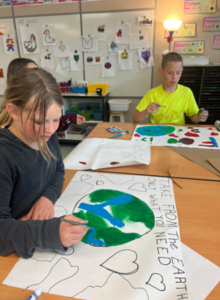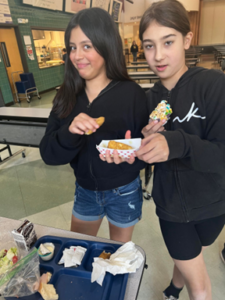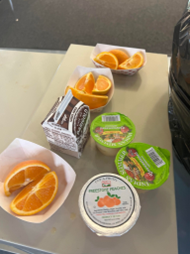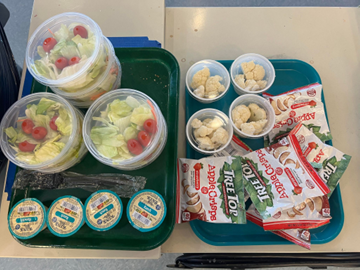By Cindy Hall, Art Teacher, Olympia Middle School
I have an avid interest in the concept of food waste as it has bothered me personally for my whole life. The lessons and information provided through the SOLS class has provided me with some great talking points and lessons to bring to my classroom. Even though I am an art teacher, I found a way to raise interest in the subject and get two of my classes involved in a solution to food waste here at OMS. My goal is that next year I can impact our entire student body by using our ASB officers as ambassadors to promote the ideas and hopefully teach our classes how to take only what they need- here at school and at home.
This leads me to my first lesson; “Grounded Native Ways of Knowing.”

Lesson #1: In this lesson we explored the Native worldview that food is a gift, not a commodity. We discussed how to take only what we need and learned to show respect for food in how to gather, prepare and store it so none is wasted. Students made informative posters for the school with the 4 guiding principles to reduce food waste: food is a gift, take only what you need, use as much as you can, give back through compost.
Students enjoyed designing and painting their posters as well as telling others about these important concepts. I overheard conversations among students about what composting actually was and how to do it. This told me that they knew more than I thought and they just need to start making a conscious effort to use this knowledge and pass it onto others. They put their posters up in the common areas of school, where breakfast and lunch are served.
Lesson #2 : “Waste Walk” and interviews. This was very insightful!!
Students were surprised by the amount of food wasted at each meal. At breakfast, they serve less food and it is optional, so there was less waste because kids only took what they wanted.
“I was impressed with the desire students showed to make a difference at our school. We can’t change the laws at this time, but we can create solutions. Students have great ideas and a lot of passion for fixing this issue.”
— Cindy Hall, Olympia Middle School Art Teacher
Lunchtime is much more of a problem.
Students noted that foods thrown away included mostly fruit, salads and vegetables. They enjoyed interviewing lunch-goers to ask why they were throwing potentially good food away.
The answers varied. Comments included; “The chicken is dry,” “I don’t like that and they made me take it,” “I am already full,” and “I tried it and I didn’t like it.”
As noted in journal pages, students were wasting mostly vegetables and the common idea was that since they were required to take them

but had no intention of eating them they were being thrown away. Milk was also commonly wasted, either half drunk or in some cases whole unopened cartons were thrown away. This, too, is a requirement on the lunch tray.
Lesson #3: What do we do about it?
Of course we couldn’t stop there. . . we had to find an easy – and acceptable to the lunch lady – solution to this wasting of food. We promoted the use of a share bin by standing at the garbage cans and asking kids to put untouched food on the tray for others who may still want more. We collected salads, cups of vegetables, bags/cups of fruit and even milk.
Students enjoyed being able to take seconds of their favorite things from lunch and even told others about it. They are starting to share more at the lunch table now and take less of things, like ketchup packets, that are not needed. The signs around the lunchroom are great reminders about why we shouldn’t waste and how we can take only what we need.
After all three lunches were served, one student thought we should bring the rest of the lunch leftovers to class for snack…I obliged and served 24 bags of apple chips, 7 cups of broccoli and about a dozen salads to my remaining 2 classes that day. I would venture to say those kids appreciated the food a little more and maybe will think about waste in a new way.

After all was said and done, I was impressed with the desire students showed to make a difference at our school. We can’t change the laws at this time, but we can create solutions. Students like Timmy have great ideas and a lot of passion for fixing this issue. Yes, weighing food and making sure people are willing to be part of the solution are great ways that we can instill change in our waste levels at Olympic Middle School. I’m hoping that next year we can develop this further, using our ASB officers as ambassadors.
